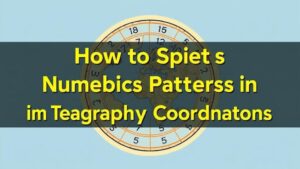Detecting for Religious Relics Around Monasteries and Shrines
Detecting for Religious Relics Around Monasteries and Shrines
The search for religious relics around monasteries and shrines has captivated archaeologists, historians, and the faithful alike for centuries. Such investigations are often fueled by the rich spiritual significance of these artifacts, as well as their potential to deepen our understanding of historical practices and beliefs. This article delves into the methodologies employed in detecting relics in these sacred spaces, the historical context underpinning their significance, and the implications of such discoveries.
The Historical Context of Religious Relics
Relics, defined as the physical remains or personal effects of saints, martyrs, and other holy figures, hold profound importance in numerous religious traditions, particularly in Christianity. are often considered as conduits for divine grace or power. For example, the veneration of relics in early Christianity became prominent as the Church sought to establish a tangible connection to the divine through the saints. Iconic examples include the veneration of St. Peters relics within the Basilica built in his honor in the Vatican.
- In the Eastern Orthodox tradition, relics of saints like St. Nicholas continue to be subjects of devotion and pilgrimage.
- Celtic Christianity integrated the concept of relics deeply within its monastic traditions, illustrated by the veneration of the remains of St. Columba.
During the Middle Ages, relics became central to the pilgrimage economy, influencing the architecture of monasteries and shrines designed to house such precious items. r detection remains an area of significant archaeological interest as these artifacts offer insights into the socio-religious landscape of their time.
Detection Techniques for Relics
Detecting religious relics involves a multidisciplinary approach that combines historical research, archaeological excavation, and advanced technology. Each method has its strengths and limitations, and the selection is often dependent on the specific context of the monastery or shrine.
1. Historical Research
Before embarking on physical detection, researchers must dive deep into historical texts, manuscripts, and oral traditions to identify possible locations of relics. This research often includes:
- Reviewing ancient hagiographies that document the lives and deaths of saints.
- Studying ecclesiastical records that mention the relocation or discovery of relics.
- Exploring local folklore that may signal hidden or forgotten relics.
2. Ground Penetrating Radar (GPR)
Ground Penetrating Radar is an increasingly popular non-invasive technique used in archaeological surveys. GPR works by sending radar waves into the ground and analyzing the reflected signals to detect sub-surface objects. This method has been instrumental in:
- Identifying the presence of buried structures or graves that may contain relics.
- Mapping the layout of monasteries that have undergone destruction, aiding in targeted excavations.
For example, a GPR survey at the site of an ancient monastery in Western Europe revealed potential burial sites of saints, encouraging further archaeological investigation.
3. Electromagnetic and Resistivity Surveys
Electromagnetic surveys can discern changes in the electrical conductivity of soil, which may point to human-made objects or disturbances. Similarly, resistivity surveys measure the resistance of subsoil layers to electric current, assisting in identifying potential burial sites. e techniques have been utilized effectively at:
- The site of a former monastery in England, where unexpected resistivity patterns indicated a possible hidden crypt.
- Historical shrines in Italy, targeting areas identified in historical documentation as significant for further exploration.
Case Studies of Successful Relic Recoveries
Numerous successful discoveries of relics underscore the effectiveness of these detection methods in action. One prominent example is the recovery of the relics of St. Ambrose in a 2004 excavation near Milan. Utilizing GPR, archaeologists confirmed the presence of a burial site believed to house the saints remains, leading to the official reinterment of his relics in the Basilica of SantAmbrogio.
Another notable instance occurred in 2018, when a team of archaeologists in Turkey employed resistivity surveys to uncover what they believe to be the burial site of St. Nicholas in Myra. The combination of historical research and advanced detection techniques led to promising preliminary findings, attracting global attention.
Ethical Considerations in Relic Detection
While the detection of religious relics holds significant scholarly and cultural value, it also raises ethical concerns. e is a growing discourse on the implications of excavating sites that hold sacred meaning for various faith communities. Factors to consider include:
- The potential impact of disturbance on the spiritual integrity of the site.
- The need for collaboration with religious authorities to address concerns regarding ownership and the treatment of relics.
Conclusion
Detecting relics around monasteries and shrines is a complex yet fascinating endeavor, bridging the gap between archaeology and spirituality. Through a blend of historical insight and modern technology, researchers can uncover profound connections to the past while navigating the sensitive ethical landscape that accompanies such explorations. As methods continue to evolve, the potential for future discoveries remains vast, promising to deepen our understanding of religious practices and cultural heritage.
Actionable Takeaways
- Emphasize careful historical research before conducting excavations.
- Leverage modern technology like GPR and resistivity surveys for non-invasive detection.
- Engage with local religious communities and authorities in the planning stages of exploration.
The continued study of religious relics not only enriches our historical narrative but respects and honors the faith traditions that these items represent.

